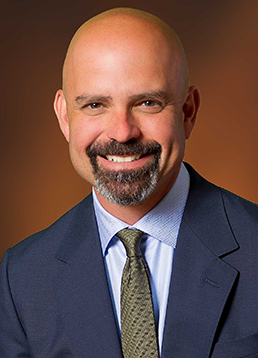
The past two days have been difficult for nonprofit groups around the Seattle region that rely heavily on the annual GiveBIG philanthropic campaign. The Seattle Foundation, which organizes the one-day event, extended GiveBIG to two days after problems with a third-party technology platform, Kimbia, prevented many would-be donors from participating in the campaign on Tuesday.
GeekWire caught up with Tony Mestres, the Seattle Foundation CEO and president, and a former Microsoft vice president, for a brief update on the tech challenges following the annual Arts Fund luncheon in Seattle today.
One of our questions: Given all of the cloud and e-commerce expertise in our backyard, why not work with the Seattle region’s tech industry on a homegrown platform instead?
Continue reading for Mestres’ answer to that question and others in these edited excerpts from our conversation.
Q: What’s the status as of now? Are donations going through?
Mestres: Yes, the platform is behaving predictably, consistently. All transactions are happening clean. It’s exactly what we wanted. What happened affected about 40 different giving days around the country, and when that happened and we were finally able to get to a place with the platform provider, Kimbia, and their partner Rackspace, where it was actually now stable, we decided to just extend GiveBIG to a second day, which is a big lift for everyone but we really felt that it was important for us to keep looking after the interests of these amazing non-profits here in the community.
Q: Do you have a sense for what happened technically at their data center?
Mestres: I think it’s a fair question to ask them. It’s a fair question to ask Rackspace. Clearly our technology team has various opinions on it but without having substantiation on that, I would not feel good trying to speculate.
Q: Will this change how you approach things next year? Might you consider bringing it in-house and leveraging the technology expertise in our region versus somewhere else?
Mestres: I can tell you that we have asked ourselves that question a number of times over the last day. There’s no question that we will have a whole new perspective on making sure that whatever we do in the future is rock solid, left to right. Now, I will say the solution that 40 non-profit community foundations were relying on was one that was an established, referenced, industry standard for this type of a thing. Yet, as a we know, from our experience in technology, these things can hit anywhere. They can hit Apples and Googles and Microsofts. They can hit platform providers. They can hit any kind of hosting provider and it happened. So now it’s about what we do next.
Q: Do you think you’re going to hit the $20 million goal?
Mestres: We’re tracking. What’s showing on the ticker on our website right now is approaching on $14 million at a quarter to 2 p.m. That does not include our stretch million or the matching funds, which are, depending upon how you count them, kind of around three million. When we think about the overall day, what’s important for us in terms of that goal is that the non-profits benefit from 20 million. If we can get to that 16, 17 million mark in terms of what’s on the board, the rest actually gets us there. But I will also say that we know some non-profit partners, when the platform was challenged, diverted donors to their own channels and we have good evidence to suggest that several million dollars went through those channels.
Q: That raises a good question. Why not just have everybody decentralized, organizations raising their own funds on a single day, versus going through a single point of failure?
Mestres: It’s a very fair question and that’s in our consideration set for next year. Right now we still have our helmets on and we’re wanting to get through today and then we’ll be able to reflect on great architectural, strategic questions like that.
Access the GiveBIG platform here to donate to Seattle-area nonprofits through the end of the day, and see our earlier post for more background on the Seattle Foundation’s technology transition.



